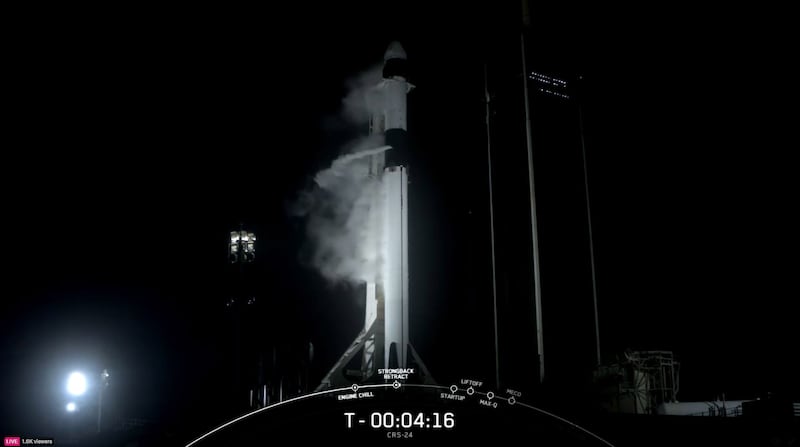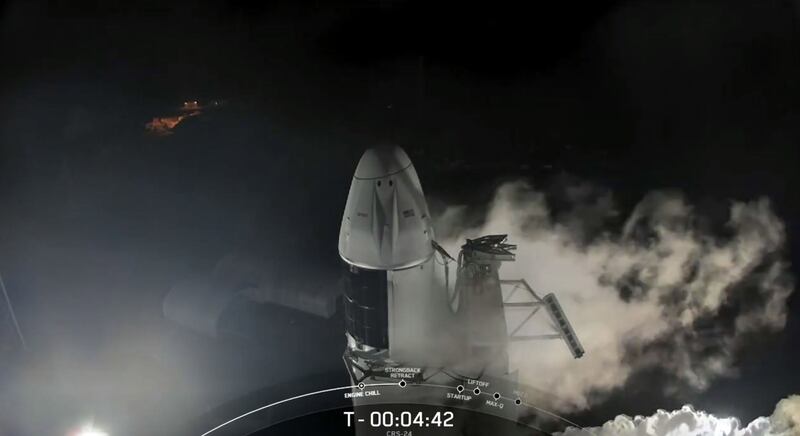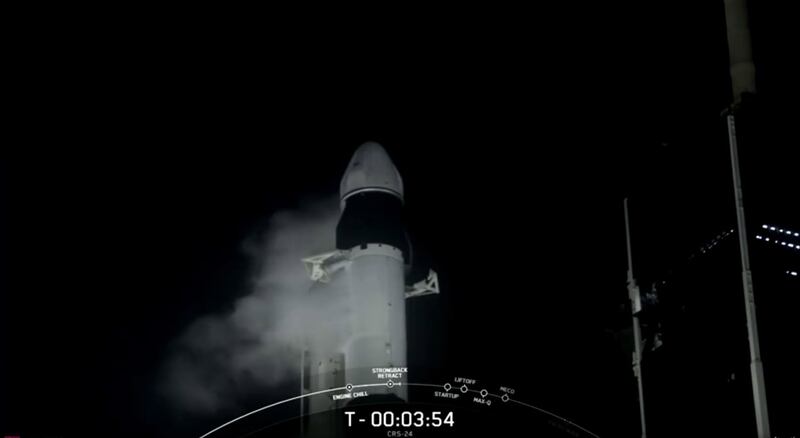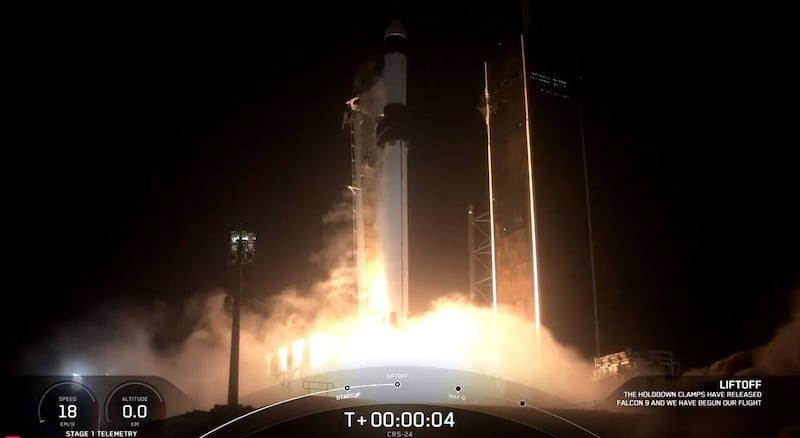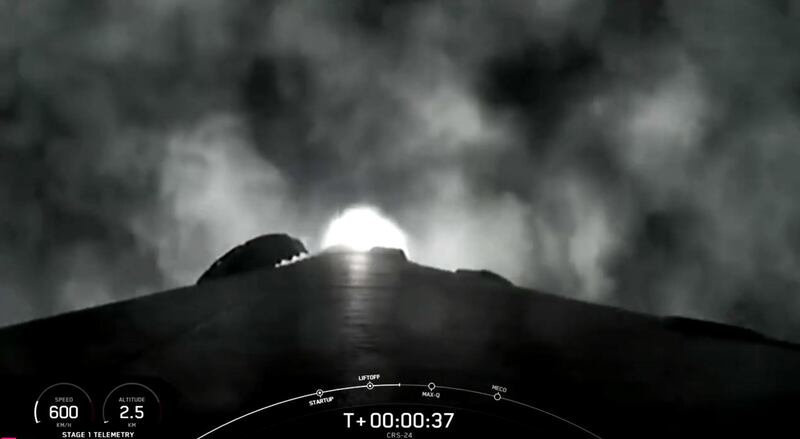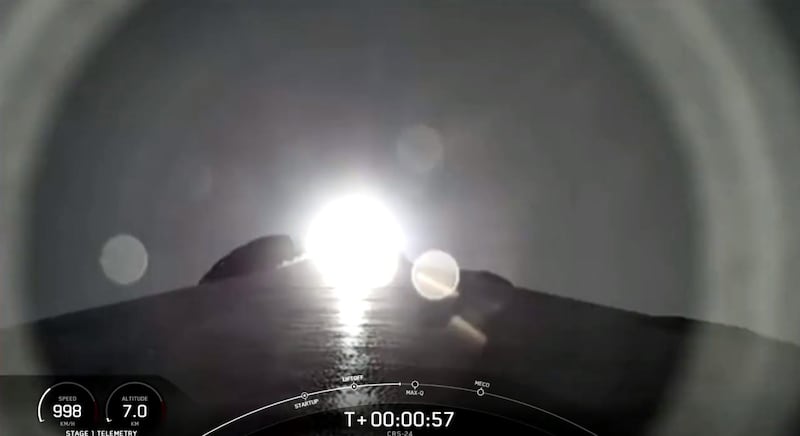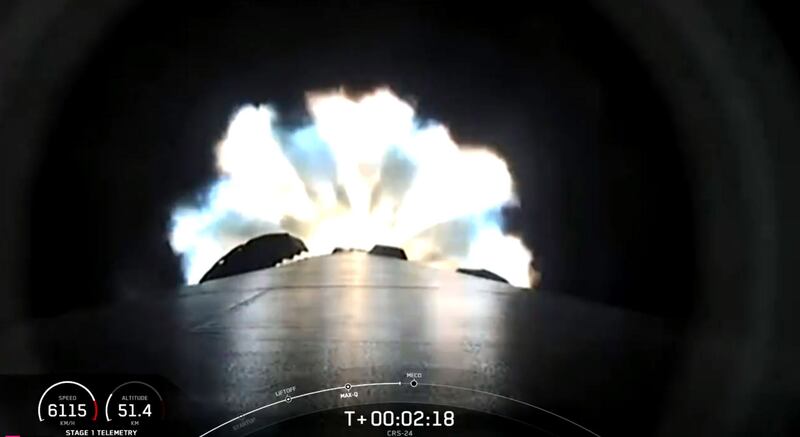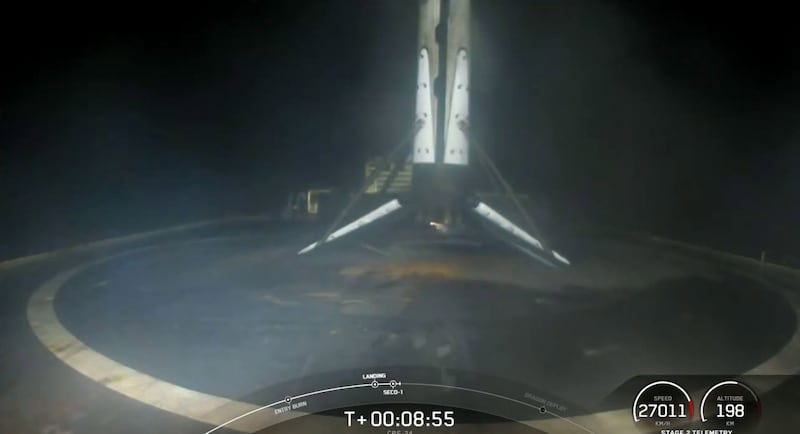A SpaceX rocket blasted off on Tuesday carrying a UAE-Bahraini miniature satellite to the International Space Station.
CRS-24 lifted off at 2.07pm UAE time from Florida's Kennedy Space Centre.
The Dragon spacecraft separated from the Falcon 9 rocket at 2.22pm and will reach the space station at 1.30pm on Wednesday.
It is delivering more than 2,900 kilograms of supplies, experiments and holiday treats to the astronauts.
The UAE-Bahraini CubeSat, called Light-1, will monitor and study terrestrial gamma-ray flashes from thunderstorms and cumulus clouds – fluffy clouds with flat bases.
It will spend a few weeks on the ISS, before being deployed into orbit in January to begin operations.
Students at New York University Abu Dhabi and Khalifa University built the nanosat. The team included nine Bahrainis and 14 Emiratis.
The nanosat is a joint project by the UAE Space Agency and Bahrain’s National Space Science Agency.
Light-1 has been named after King Hamad's first book called The First Light, which recounts Bahrain’s history. It is a 3-unit CubeSat, the most advanced of its kind.
Sarah Al Amiri, UAE Minister of State for Advanced Sciences and chairwoman of the UAE Space Agency, congratulated the teams that worked on the nanosat.
"Light-1 is a milestone for Emirati-Bahraini ties and a new chapter for our nation’s history in space. It reflects our efforts to exchange knowledge and expertise to stimulate cutting-edge research, scientific discoveries and human progress," she said.
"I would also like to thank Khalifa University and the NYU Abu Dhabi for providing their world-class facilities to train team who worked on this landmark scientific endeavour.
"Capacity-building is a vital part of our efforts to stimulate our knowledge-driven economy and both universities have played a key role in empowering the next generation of talent.”
What will it study?
Light-1 will measure charged particles above thunderstorms that release harmful levels of radiation and can endanger aircraft passengers.
The particles – known as terrestrial gamma-ray flashes – can expose air passengers to the equivalent of 400 chest X-rays in one flash.
The flashes can also play havoc with a plane's electronics, putting passengers and crew at risk.
A special crystal detector on the nanosat will help measure the flashes and their potency.
"These are really powerful events," said Ahlam Al Qasim, a physics graduate from NYUAD.
“To give you an idea of how powerful they are – a lightning strike ... produces voltages of about 500 kilovolts, which is strong enough to kill a person if it strikes them.
“TGFs can reach energy of up to 100 mega electron volts – implying they give off more than 100 megavolts. That’s very high energy.”
The phenomenon was accidentally discovered by space scientists at US space agency Nasa in 1992 when carrying out studies about cosmic gamma-ray flashes, which occur outside Earth's atmosphere.
TGFs are created above thunderclouds, last only a few milliseconds and escape into the atmosphere.
"Aircraft fly on top of clouds all the time and if they were to fly within the vicinity of where one TGF would be emitted, it's actually very dangerous for people on board and also for the [aircraft] electronics," Ms Al Qasim said.
“So we need to understand these things better to help us really avoid the danger that might come with it.”
Francesco Arneodo, a physics professor at the New York University Abu Dhabi Centre for Astro, Particle and Planetary Physics, said that the mission would help create an improved model of how these gamma-ray bursts are generated.
Some of the main questions the nanosat would aim to answer is how are they generated, how often and how long do they last.
“In the last 20 years, there have been satellite missions that were designed to study bursts of gamma rays that are generated in galaxies, but there have been only a few missions that study bursts coming from Earth,” he said.
“The exact mechanism of generation is not very well understood. There are a few models that explain it, but none that pinpoint the exact cause.”
The two kinds of crystals - cerium bromide and lanthanum bromo chlorine – would emit light whenever a charged particle would cross them.
Prof Arneodo said that the lifespan of the mission could last up to six months.
Data from the nanosat would be transmitted whenever it is above one of the two ground stations in Abu Dhabi or Lithuania.
Prof Arneodo hopes to combine the data with other ongoing missions that are studying the bursts, including from the Atmosphere-Space Interactions Monitor mission that was launched in 2018 and is still active.
